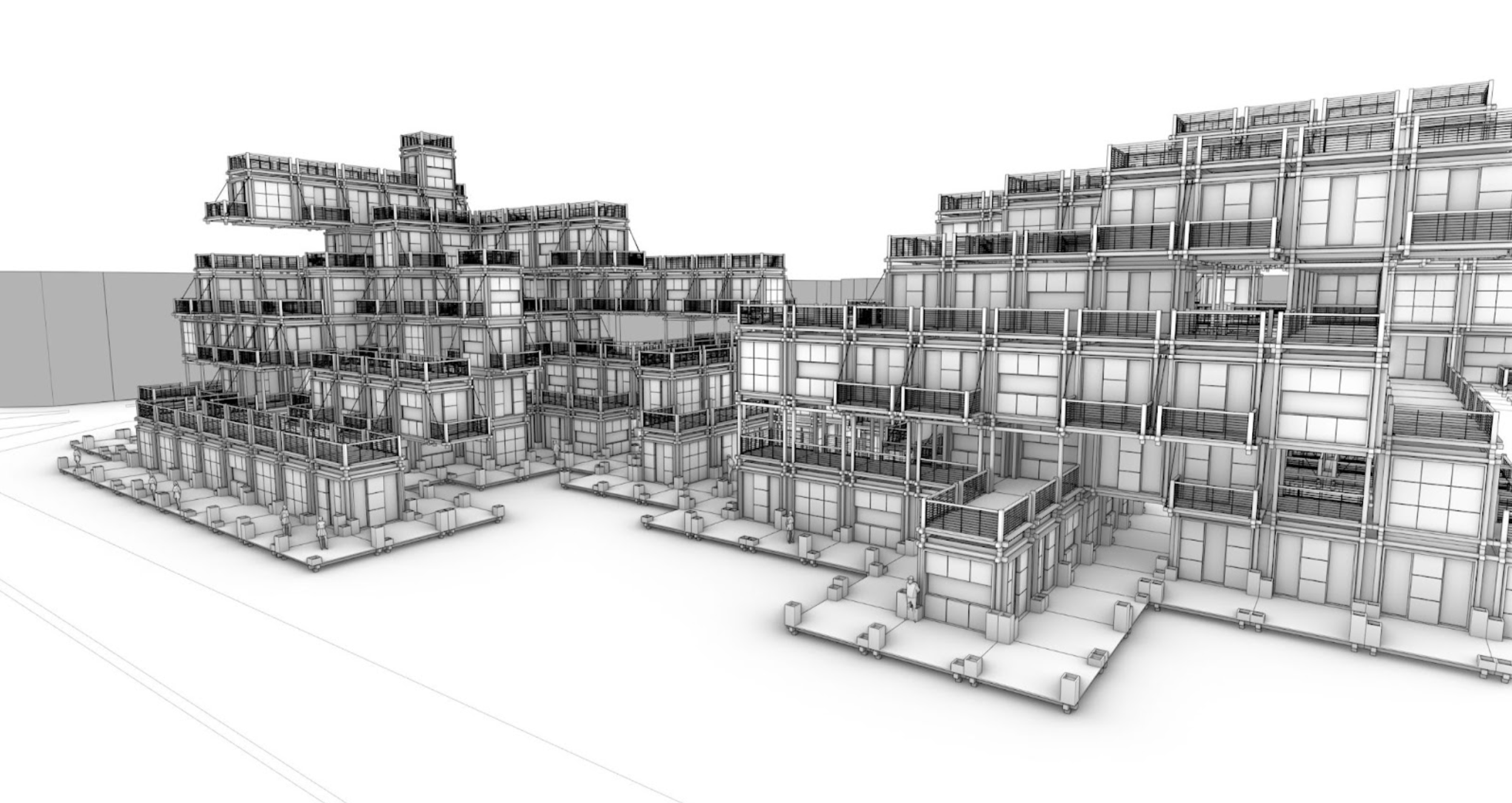Assembled Architecture explores the dual geometrical/topological computing nature of spatial systems, from basic iterative logics explored through Grasshopper and the Anemone plug-in, to more sophisticated network-based and topology-based stigmergic strategies, using both standard and bespoke components.
This seminar focuses on assembly/growth processes, investigated through iterative algorithmic strategies, and applied to an urban-block size architecture starting from elementary spatial building blocks.
Syllabus

Credits: Andrea Graziano
“The building isn’t the machine. Space is the machine.” – Nick Dalton (Computer Programmer at University College London)
The coming future will force architects to address the issues/necessities of density and the urgency to create more data-informed spatial configurations, such as assemblages, and embedding sets of specific architectural features. Being able to ‘inform’ large-scale systems, taking advantage of modularity, and defining the metrics to evaluate different spatial alternatives is a crucial ability.
The seminar focuses on the computational thinking and logic to design assembly/growth processes, investigated through iterative algorithmic strategies starting from elementary spatial building blocks. The building blocks used are treated as basic units of computation, able to store and compute data due to their topological and spatial-geometric qualities. Assemblages are thus seen as coherent organisations able to store and process information. Starting from an initial element and position, the growth process is driven by internal and external conditions which limit and enhance the growth structure and system qualities. The aggregation is then investigated and discretized into modular elements defining the architectural features.
The seminar explores the dual geometric/topological computing nature of spatial systems, using basic iterative logics explored through Grasshopper and the Anemone plug-in, then explores the blocks differentiation and articulation based on the specific aggregation geometric/topological properties. The cell process of differentiation to a more specialised type is driven by a variety of algorithmic rules from network-based and topology-based to geometric conditions leading to a coherent architectural system.

Credits: Roger Stirk Harbour + Partners
Learning Objectives
At course completion the student will:
- Learn & reinforce computational thinking logic;
- understand the concept of computation and the difference between computational and computerised in the design process;
- understand the basics of non-linear and iterative processes and learn how to use iterative tools and to manage data structure complexity;
- Learn how to create algorithmic strategies to approach building assemblages and urban block architectural design explorations;
- Be able to encode/decode data into/from geometry and exploit its spatial-topological structure to support design strategies.

Credits: Andrea Graziano
Faculty
Faculty Assistants
Projects from this course
ASSEMBLED ARCHITECTURE
The coming future will force architects to address the issues/necessities of density and the urgency to create more data-informed spatial configurations, such as assemblages, and embedding sets of specific architectural features. Being able to ‘inform’ large-scale systems, taking advantage of modularity, and defining the metrics toevaluate different spatial alternatives is a crucial ability. Custom Assemblage … Read more
Assembled Architecture
The project aimed to explore self-shading selection method to create assemblages with a filtering method to control the growth by direction patterns. The assemblages were then evaluated with a several criterias related with the accessible outdoor areas. Those criteria were then used to shape those outdoor spaces and the units facades that are facing them. … Read more
Assembled Architecture
GROUP 2 ASSEMBLAGE 1 – Components design Component A Component B Component C 2 – Custom assemblage method Component A Component B Component C 3 – Custom evaluation criteria 4 – Building the dataset Component A Component B Component C Assemblage comparison Component A Component B Component C 5 – Assemblage selection 6 – Architectural … Read more







